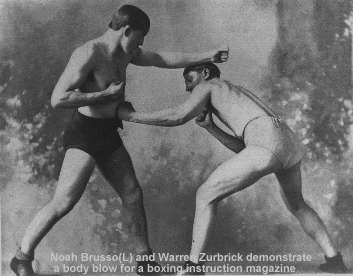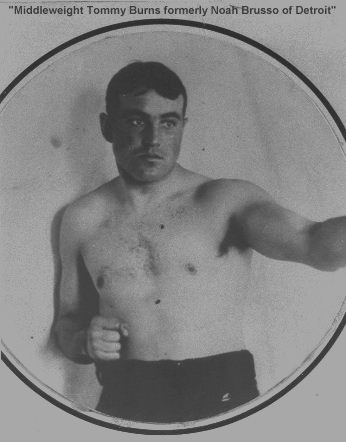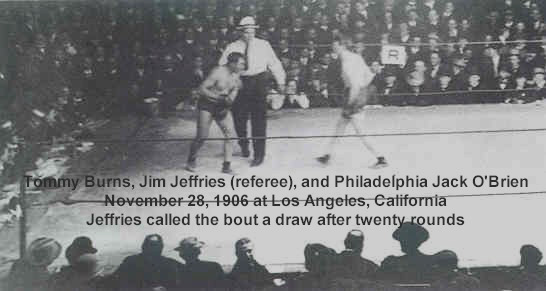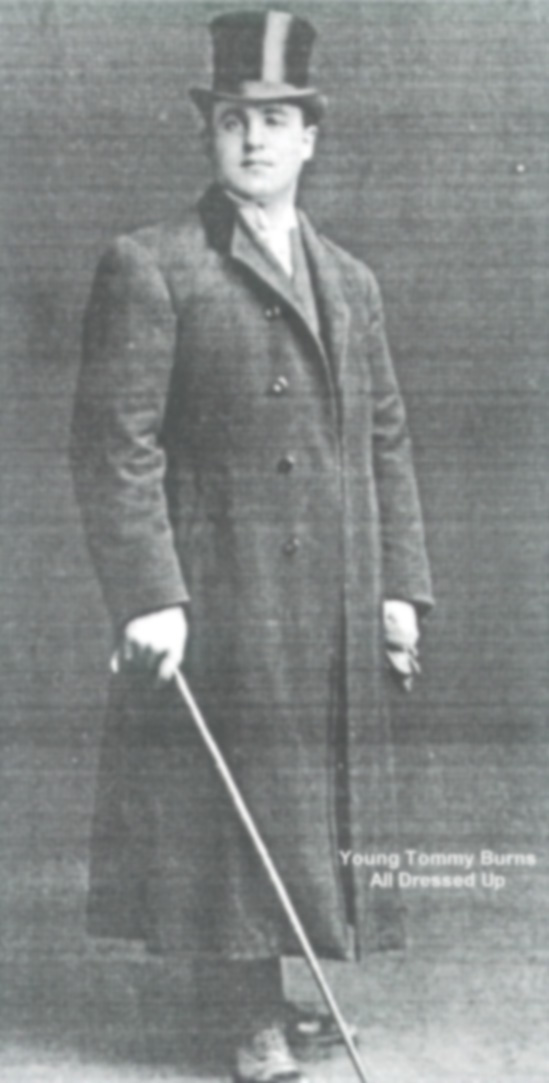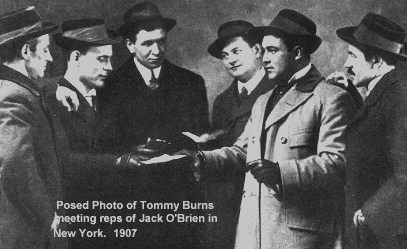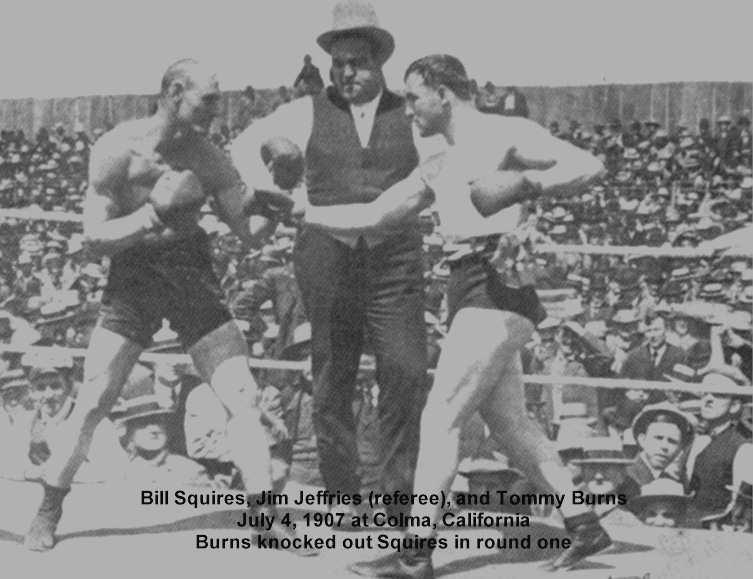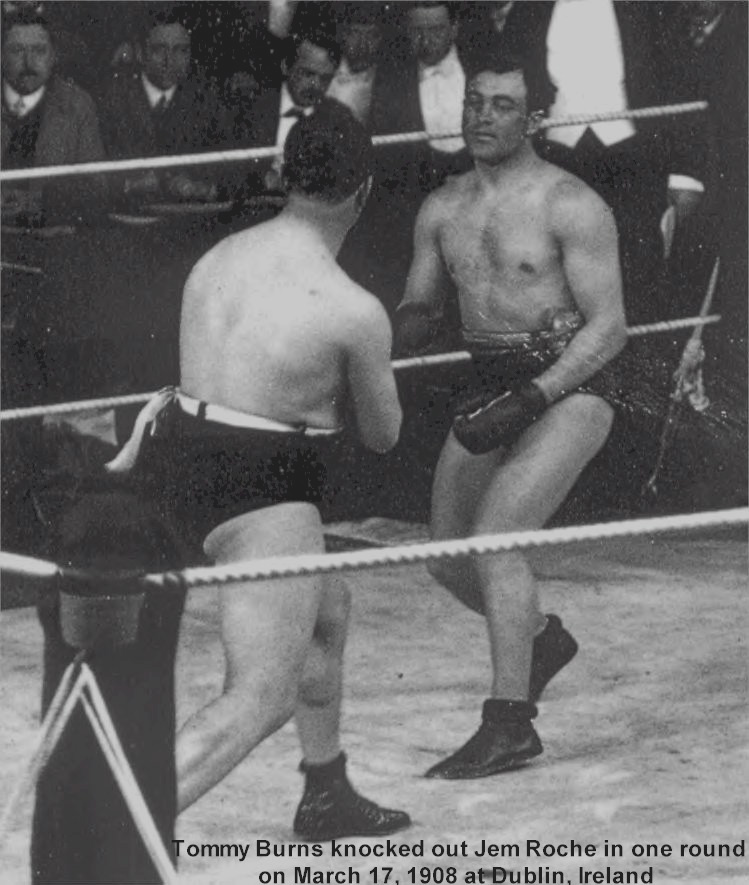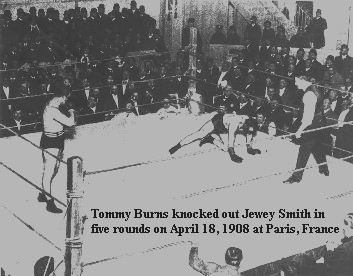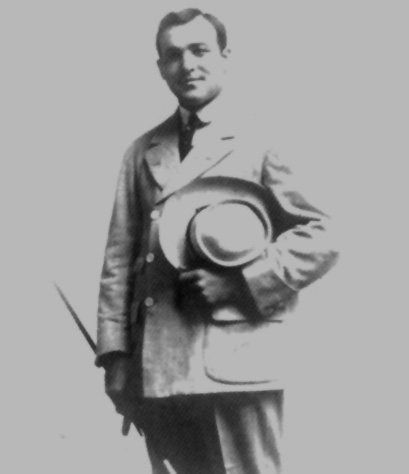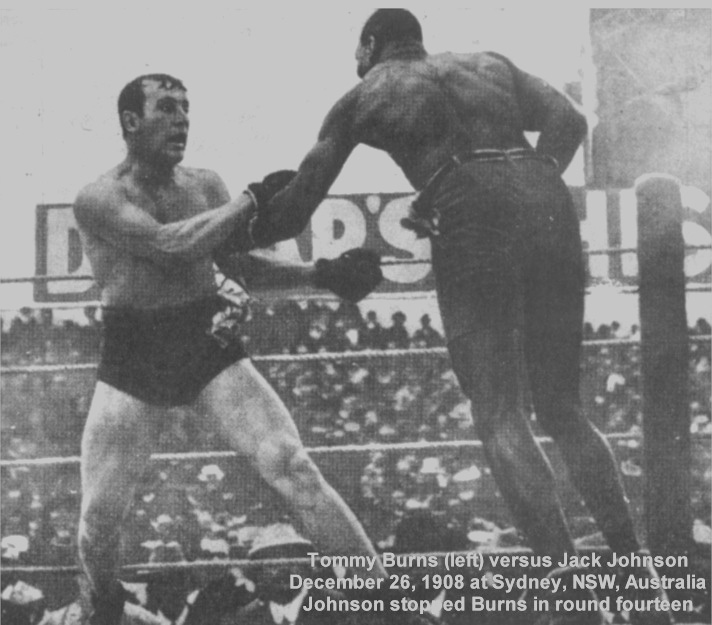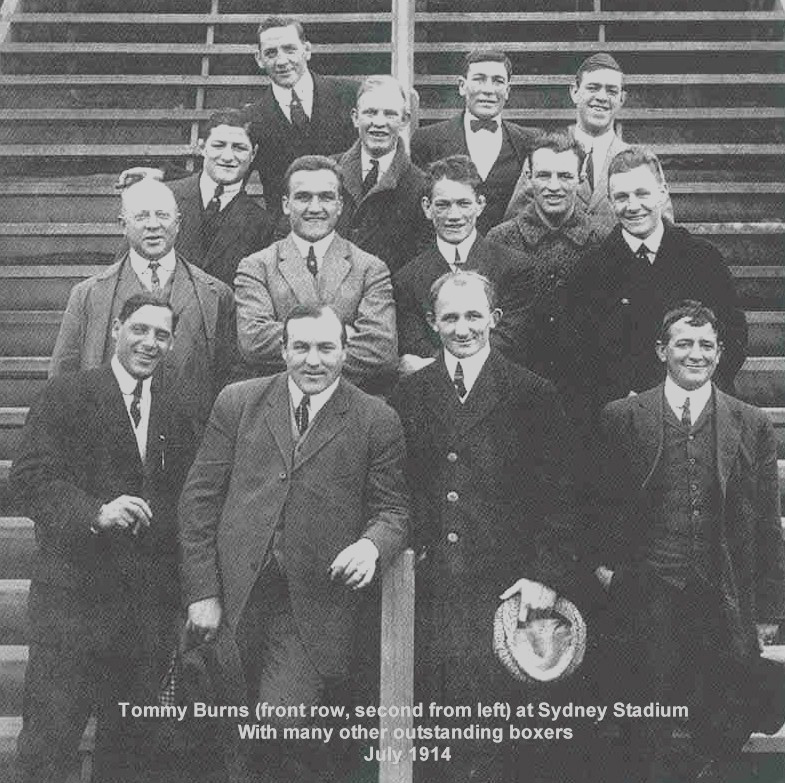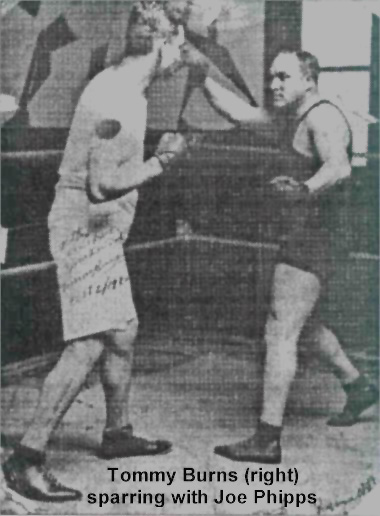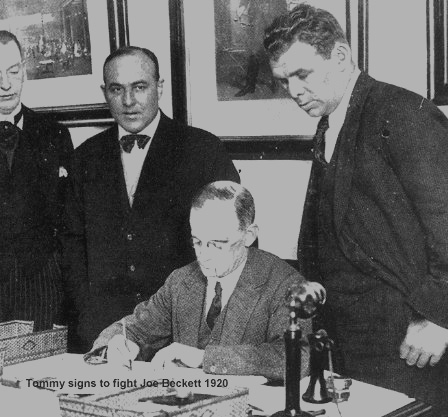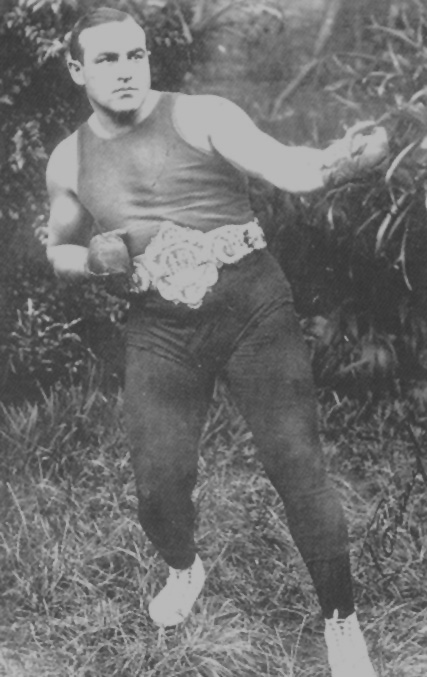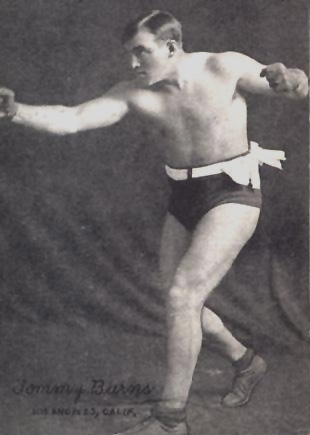
Tommy Burns was a short, squat, muscular man. In the ring, he was a bouncy,
quick-moving fighter who darted to and fro. He carried a sharp right-hand punch
along with a good left and was willing to trade punches. He was more of a light
heavyweight than heavyweight but was such a gifted hitter that he captured the
heavyweight championship.
Lardner (1972 p 173) said, "He was a short, extremely compact man with a reach
that belied his height. Facially he resembled Napoleon Bonaparte, and his hair
lay in triangular fashion over his forehead to add to the impression. Burns was
five feet seven inches, and his best fighting weight was 175 pounds. He turned
to boxing after acquiring a reputation in lacrosse and hockey. He soon showed
himself to be quick on his feet, a wise ring general who was able to throw a
powerful punch with either hand."
